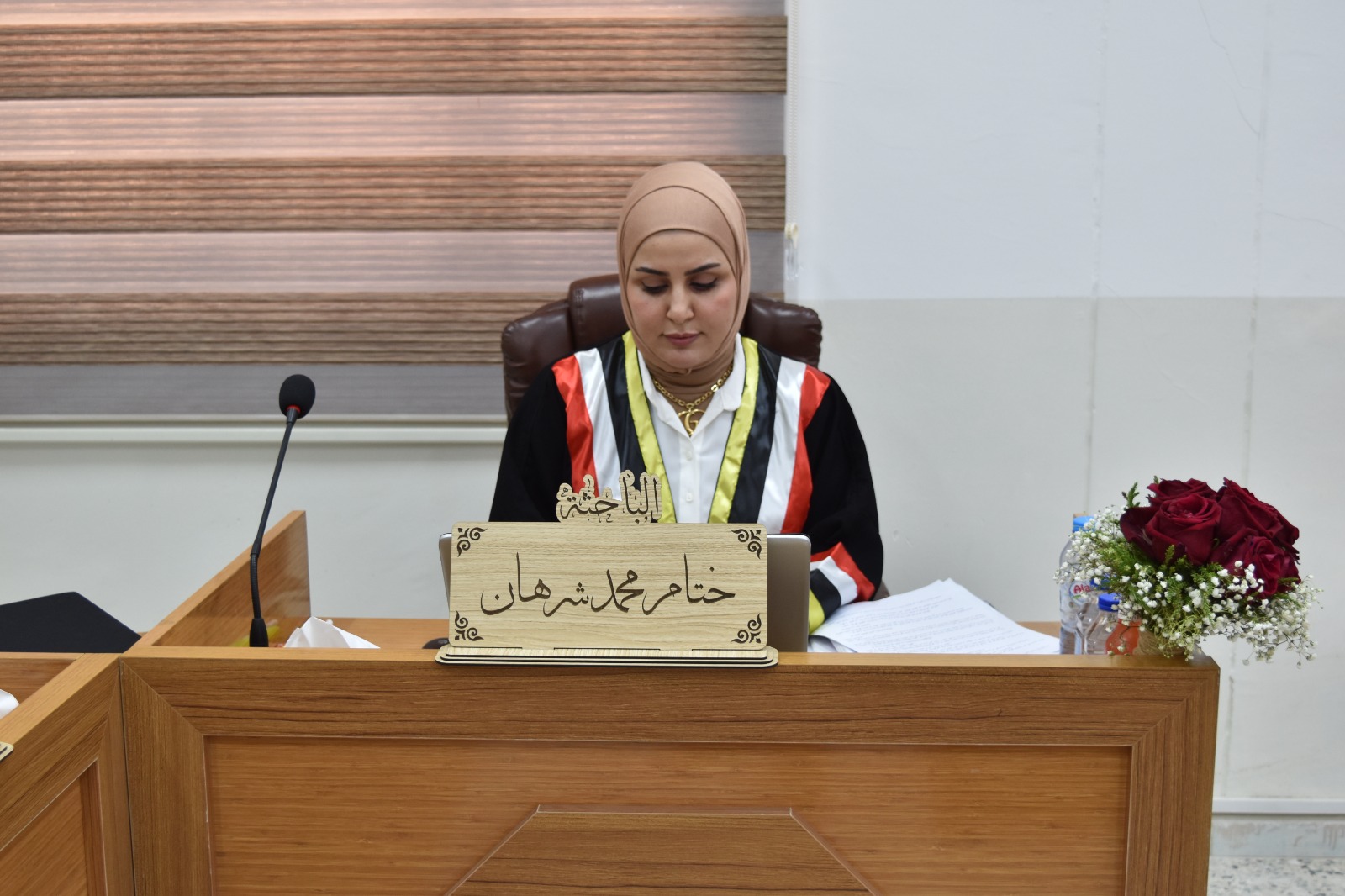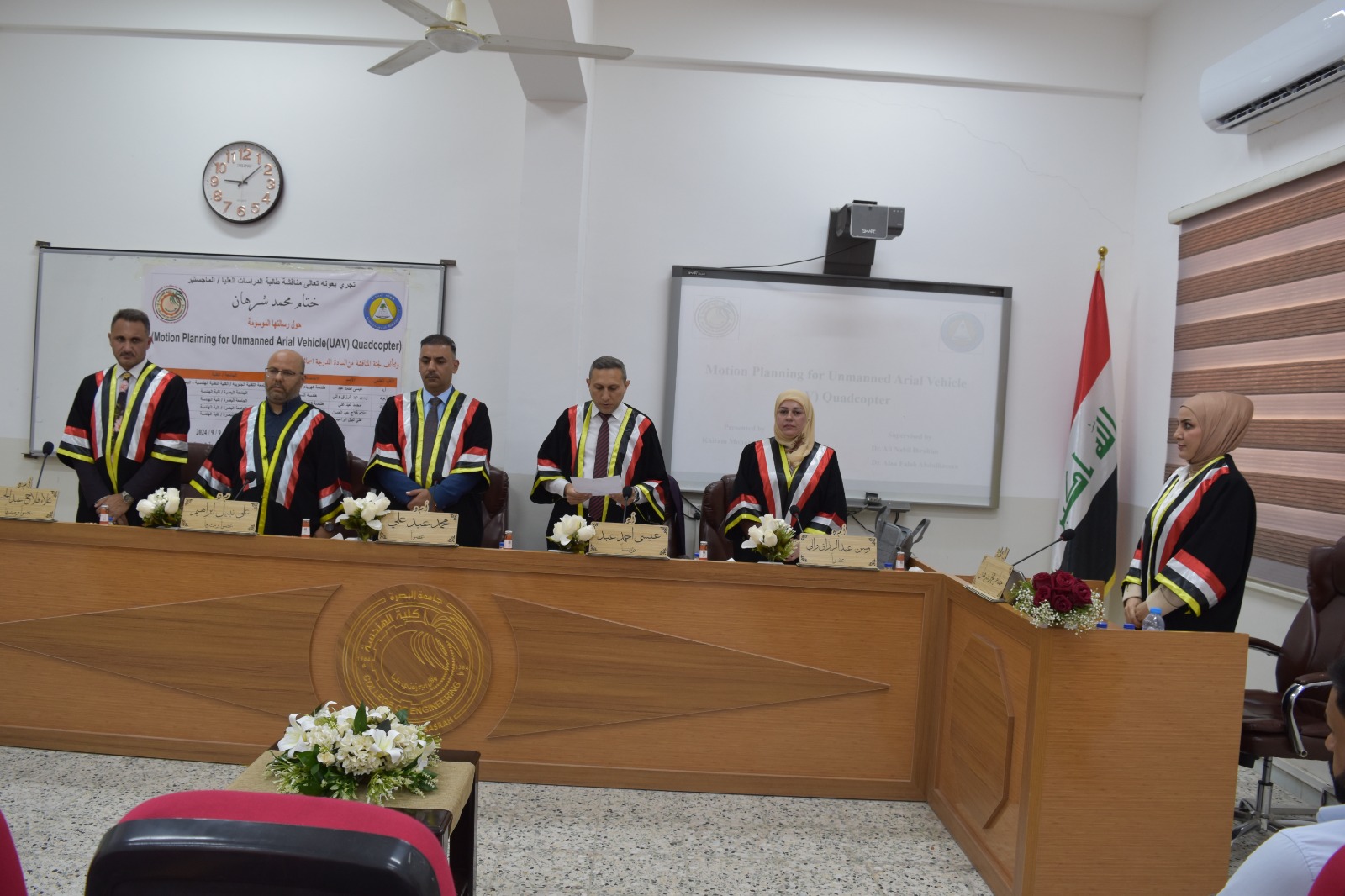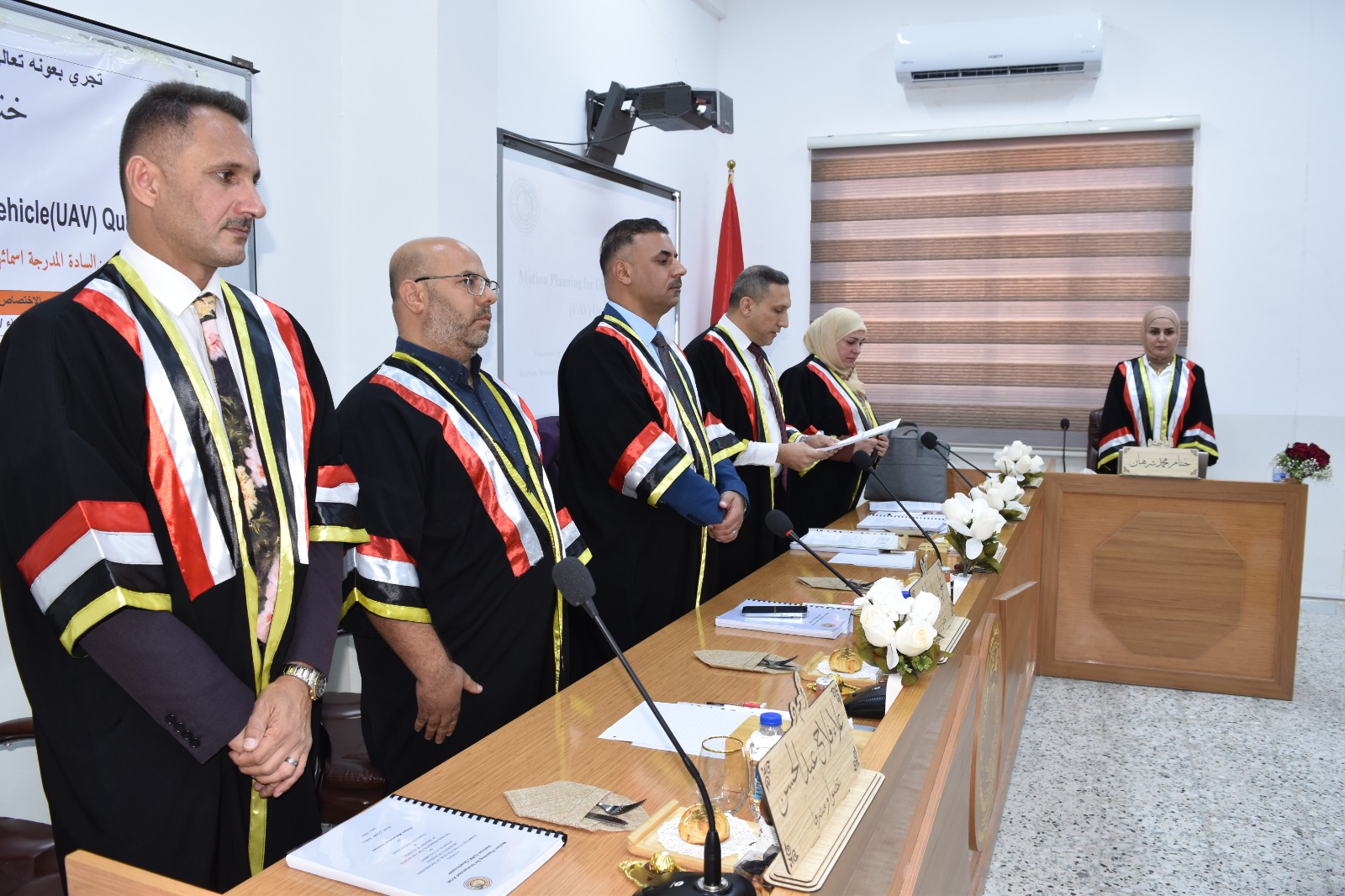The master's thesis of the student Khitam Muhammad Sharhan was discussed in the College of Engineering, University of Basra, Department of Computer Engineering, entitled "Motion Planning for a Self-Driving Quadcopter", and it includes With the increasing use of quadcopters in various operations such as search and rescue, surveillance, geographical mapping, and agriculture, improving the motion planning techniques of these drones has become crucial to enhance their ability to self-navigate in complex environments containing unknown obstacles.
This thesis aims to apply efficient motion planning methods for quadcopters to improve trajectory tracking accuracy, adapt to environmental changes, and enhance speed while reducing battery consumption. The first motion planning method applied used the Vector Field Histogram Plus (VFH+) algorithm, supported by a Proportional-Integral-Derivative (PID) control system and Light Detection and Ranging (LiDAR) sensor, which significantly improved navigation accuracy and obstacle avoidance. The second method combined VFH+ with the Pure Pursuit Algorithm (PPA), while the third method involved an adaptive VFH+ approach. These methods were tested in three environments with increasing complexity. Additionally, the fuzzy logic method was tested in nine other environments to confirm the performance efficiency. The first method, VFH+, showed good performance, where the travel time for a distance of 99.84 meters was 82.96 seconds, and the path length was 109.76 meters in a complex environment. In comparison, the second method, VFH+PPA, reduced the time to 68.42 seconds with a path length of 107.57 meters. The third method, FVFH+, performed the best, achieving an average path length of 101.08 meters and an average travel time of 62.71 seconds.
Results demonstrated that the three methods reduced planning time and improved energy efficiency compared to related works. Furthermore, the presented methods outperformed previous methods in terms of time and path length, regardless of the environment's complexity or the presence of obstacles. The FVFH+ method achieved the best results in terms of time and distance, as tested by
MATLAB Simulink.







